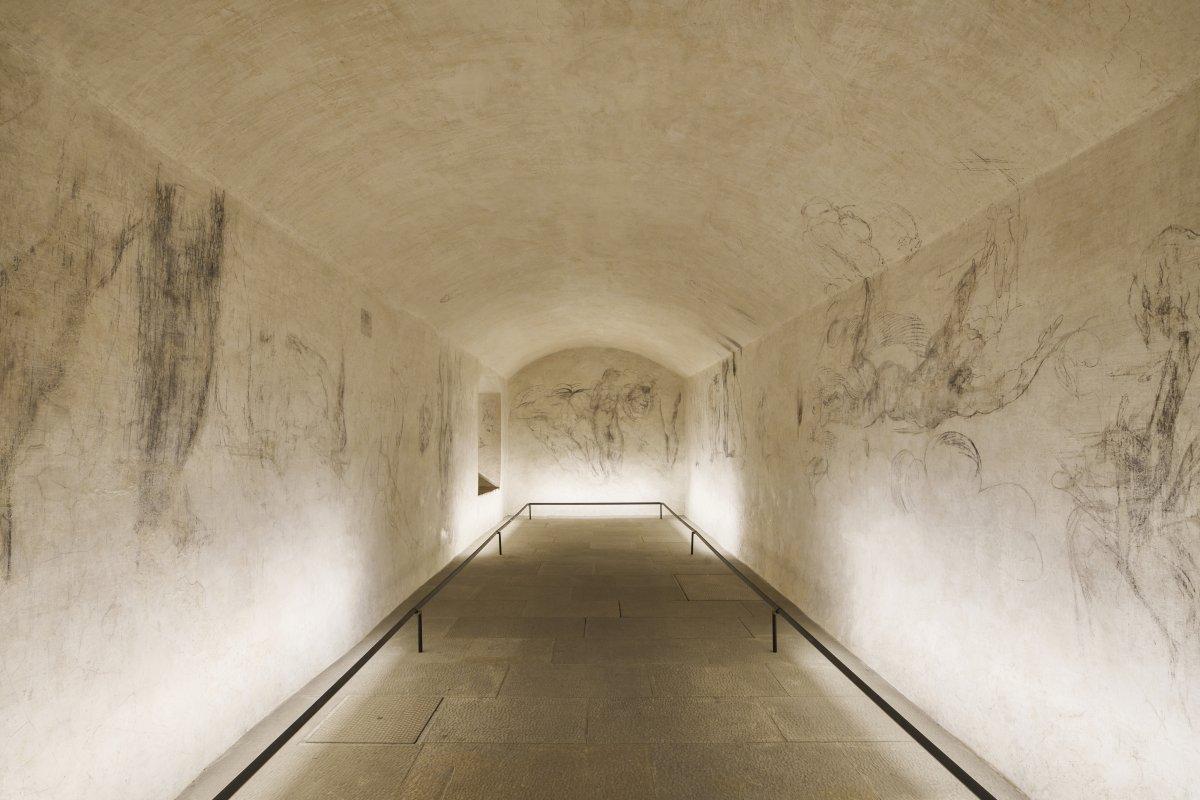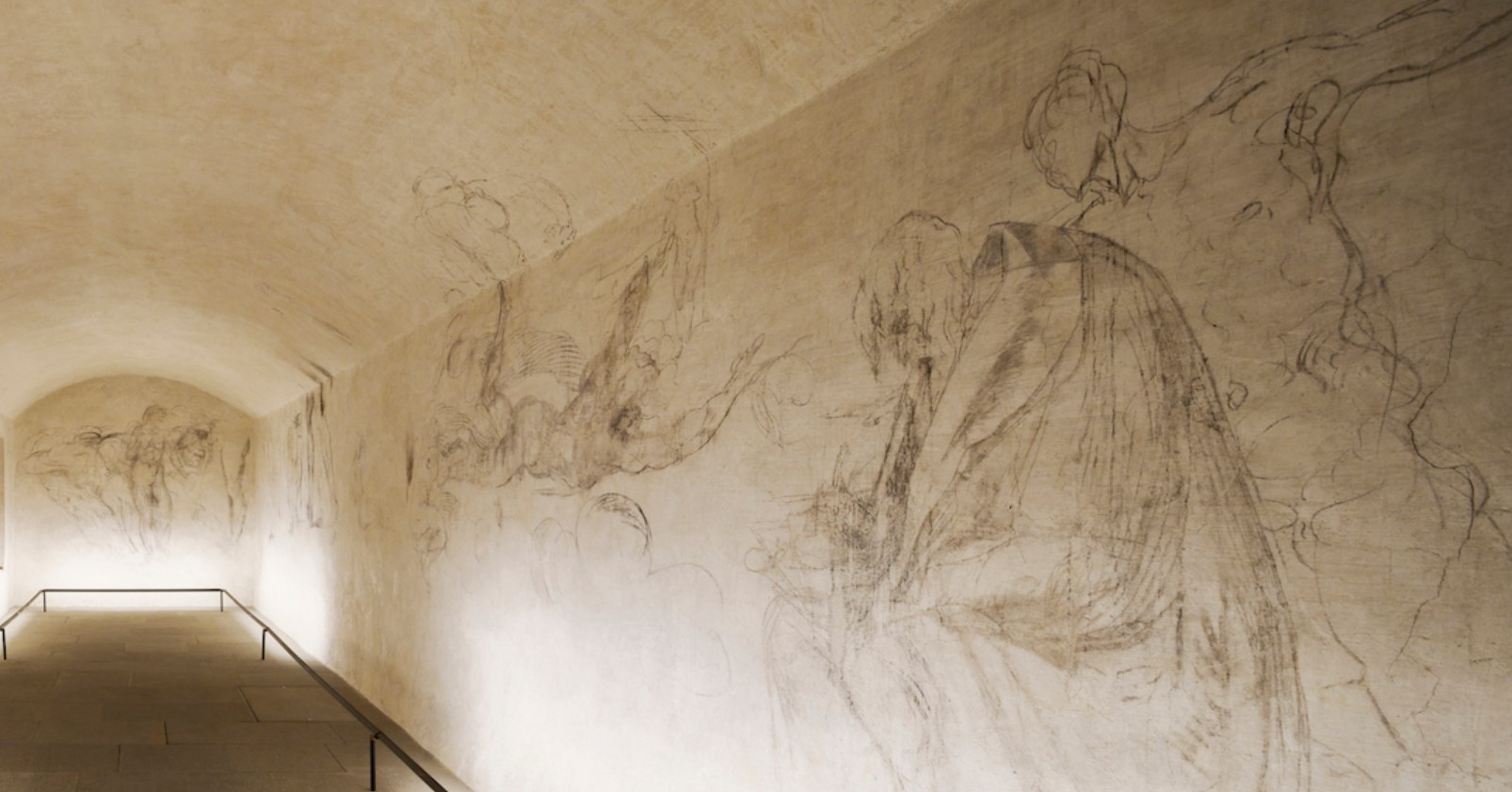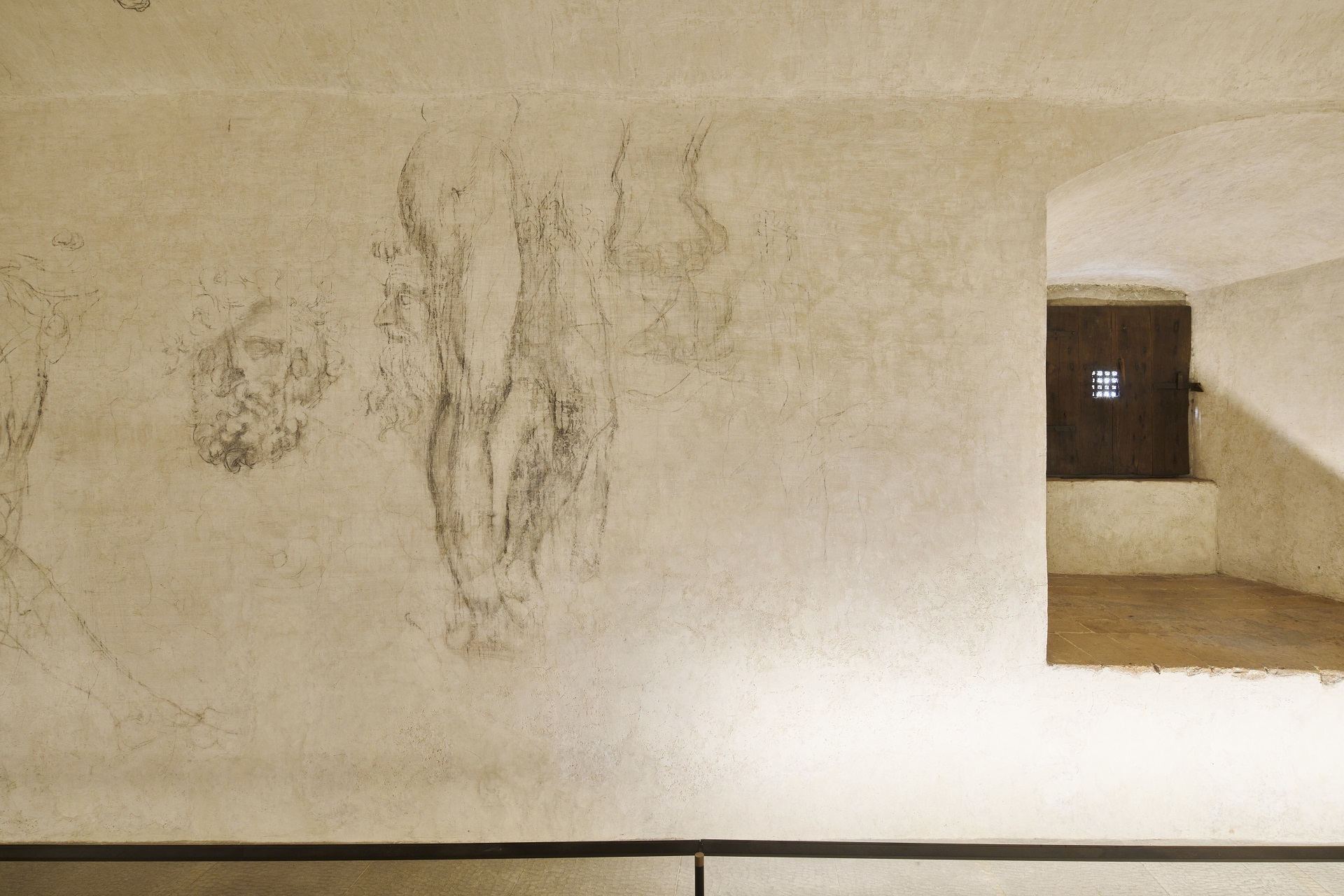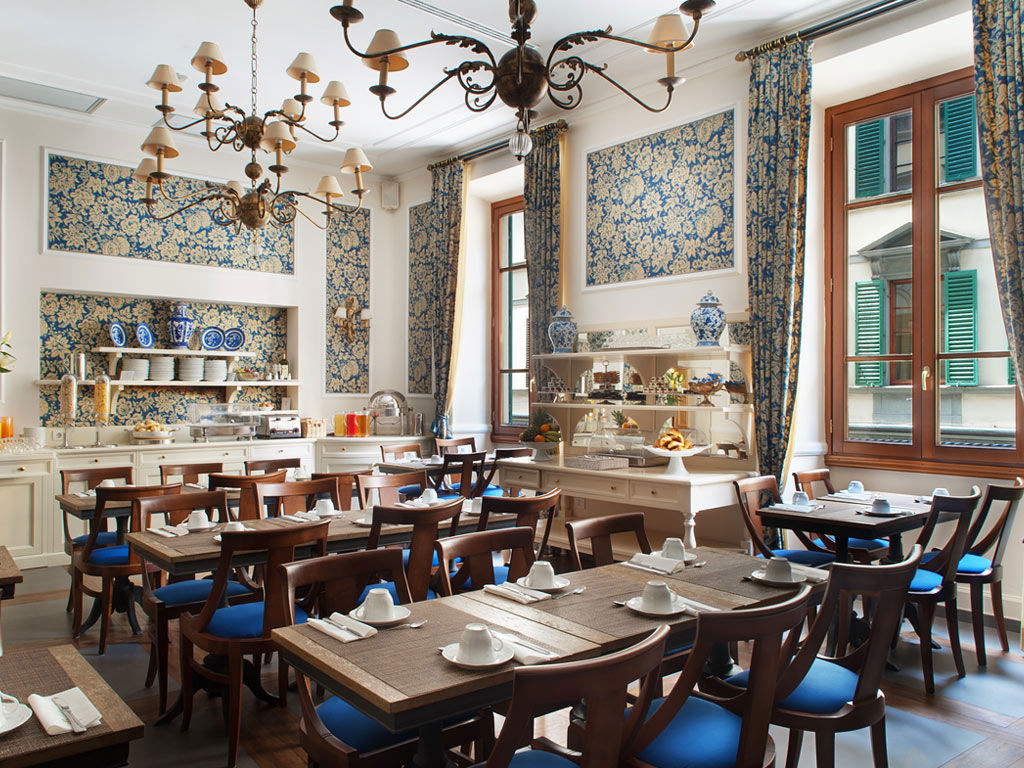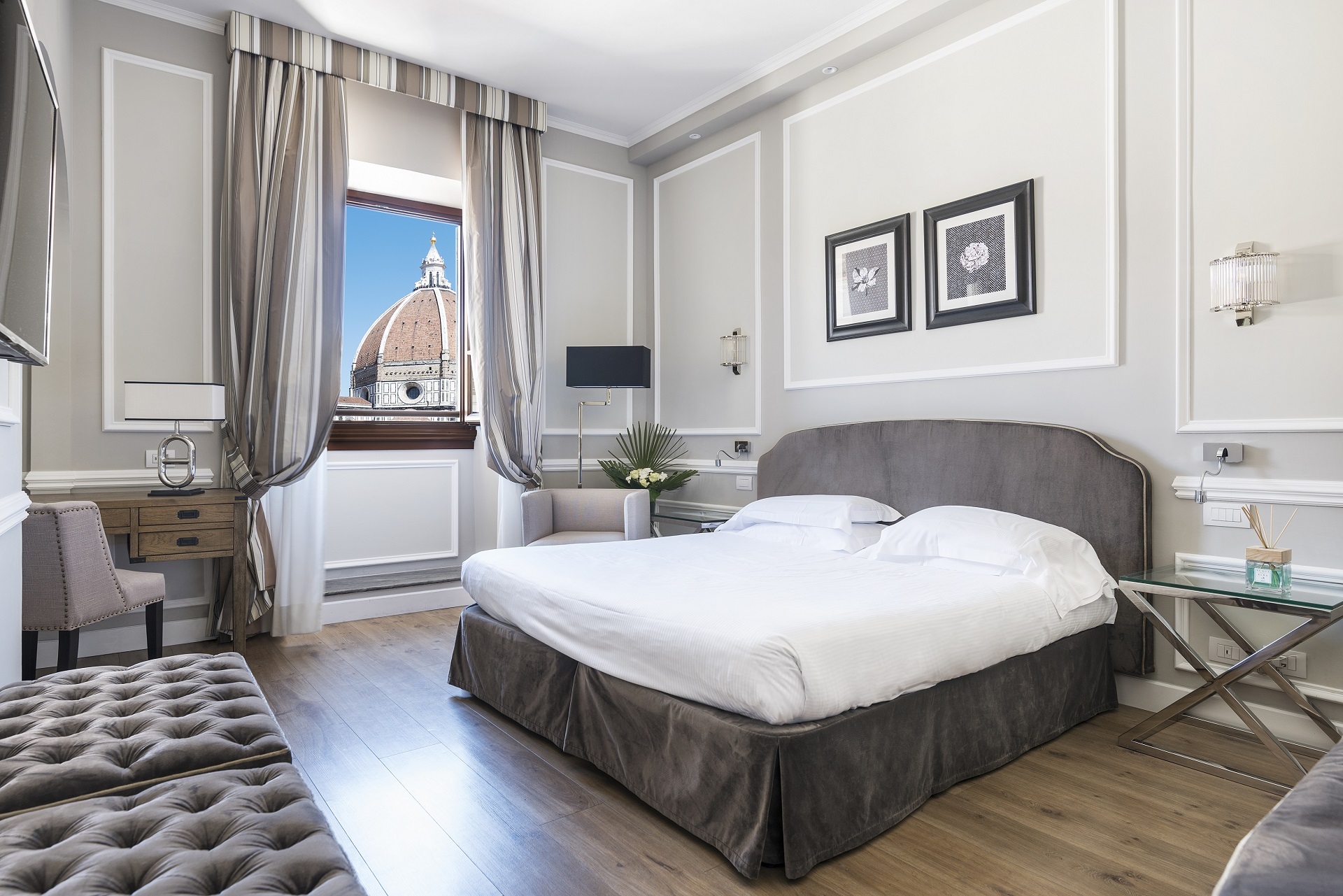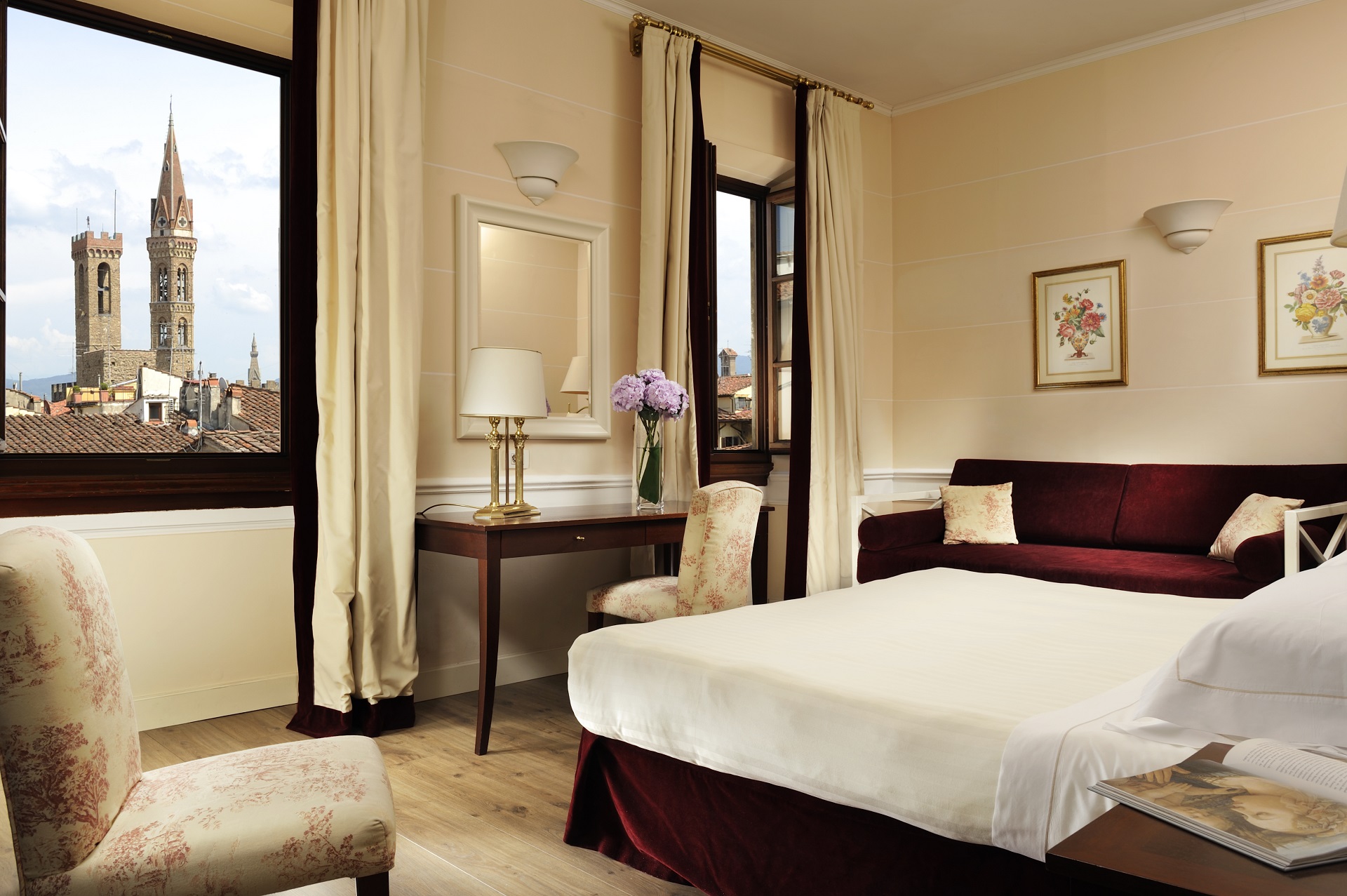Michelangelo’s Secret Room is a hidden space within the Medici Chapels Museum, the burial place of the Medici family, carved from certain areas of the Basilica of San Lorenzo, just a few meters from the Medici Riccardi Palace.
Accessible through the New Sacristy, built by Michelangelo on the commission of Pope Leo X and Cardinal Giulio de’ Medici, the future Clement VII. In the New Sacristy, Michelangelo created a sculptural complex dedicated to Giuliano de’ Medici, Duke of Nemours, and his nephew Lorenzo de’ Medici, Duke of Urbino.
The room contains mural drawings, primarily of monumental size, traced with a charred wooden stick and sanguine. These signs attest to a clear design, accompanied by anatomical studies, unusual faces, and poses. Presumably created by Buonarroti during the period when he hid there to escape the anger of Clement VII Medici, following his supervision of fortifications for the republican government (1527-1530), guilty of expelling the Medici in 1527. After obtaining the family’s pardon about two months later, Michelangelo continued his activity in Florence until his departure for Rome in 1534.
The discovery of the Secret Room, beneath the apse of the sacristy, dates back to 1975, carried out by the then director of the Medici Chapels Museum, Paolo Dal Poggetto, during a preliminary survey for the construction of a new museum exit. He found a narrow room just over 10 meters long, 3 meters wide, and 2.5 meters high at the peak of the vault. Previously used as a charcoal storage until 1955, it was abandoned, then forgotten under a trapdoor completely covered by stacked cabinets, furniture, and belongings.
Debates among scholars regarding the attribution of the drawings to Michelangelo have followed the discovery. Some believe they could be works of apprentices or later artists, but the majority of experts, including Dal Poggetto, attribute the drawings to the Renaissance master, or at least a significant portion. However, it remains one of the most important testimonies of wall graphics from the 16th century.
Visiting Michelangelo’s Secret Room
For the Medici Chapels, access is from the rear of the Basilica of San Lorenzo in Piazza Madonna degli Aldobrandini.
To maintain suitable conservation conditions, access to the Secret Room is limited. It is possible to visit only by reservation, in groups of up to four people, accompanied by a guide. Visits are available only on Mondays, Wednesdays, Thursdays, Fridays, and Saturdays, organized in predetermined time slots. The stay inside the room is 15 minutes.
The structure is not accessible to disabled individuals due to narrow and steep stairs. Additionally, for safety reasons, access is prohibited for children under 10.
Hotel Calzaiuoli ****
Hotel Calzaiuoli, a boutique hotel in the heart of Florence, a few steps from the Cathedral of Santa Maria del Fiore and Ponte Vecchio, in a prestigious historic building overlooking the street of the same name, one of the main and elegant streets in the historic center that hosts the shop windows of the most prestigious international brands.
Its privileged location allows you to fully experience the city and savor its vibrancy between art, history, and high fashion.
The 54 rooms, distributed over four levels, differ in style and colors, but all are equally comfortable and welcoming, characterized by an elegant style and high-profile services.
The structure is also pet-friendly, welcoming small and medium-sized pets.
FH55 HOTELS
Hotel Calzaiuoli has been part of the hotel group founded in 1955 by Dino Innocenti since 1984, a pioneer in the hotel industry who began by creating the Grand Hotel Mediterraneo in Florence. The story continues in 1968 with the construction of the Grand Hotel Palatino in Rome, a stone’s throw from the Colosseum. Upon the founder’s passing, the heirs, now owners of the structures, continue the expansion policy and, in 1995, acquire the Hotel Villa Fiesole. Today, FH55 HOTELS is a hotel group consisting of four structures, each with its own identity but united by the values that the ownership conveys daily to all staff and hotel management.
What to Eat in Florence
The cradle of the Renaissance and fine arts, Florence is also the birthplace of one of the noblest culinary traditions in our peninsula.
Widespread on its tables is the “sciocco” or “sciapo,” a traditional bread completely devoid of salt, characterized by the pleasant contrast of the crispy and well-cooked crust and the soft and tender crumb.
This bread pairs perfectly with extra virgin olive oil; together, they make up the ingredients of fettunta, the Tuscan bruschetta, simple and tasty, also flavored with garlic, salt, and black pepper.
For those who love intense flavors, a specialty to try is Lampredotto, the oldest and most famous Florentine street food, to be enjoyed at one of the kiosks, such as Il Trippaio del Porcellino and Panino Mondiale, or comfortably seated at Osteria Tripperia il Magazzino, Il Cernacchio Food and Wine, or even at the central market from Il lampredotto di Lorenzo Nigro. It is a sandwich filled with one of the four sections of the bovine stomach, the abomasum, cut into pieces and long-cooked in water with tomato, onion, parsley, and celery.
Crostini with chicken livers, ribollita, pappa col pomodoro, tripe are all traditional dishes that, together with Pappardelle al ragù di cinghiale and schiacciata con la finocchiona, never fail to appear on the tables of Florentine osterias and typical restaurants.
A unique culinary experience is represented by the truffle sandwich, which can only be found at Procacci, on via Tornabuoni.
A typical dish of Florence is the beef steak, known as “Fiorentina.” It is a loin of Chianina, a cattle breed in the area between Arezzo and Siena, including bone. The meat is tender: fillet and sirloin, cut to a thickness of about 4-6 cm and grilled or charcoal-cooked. “Purists” want it strictly rare, “there is no such thing as a well-cooked Fiorentina!” It should not be seasoned or marinated.
